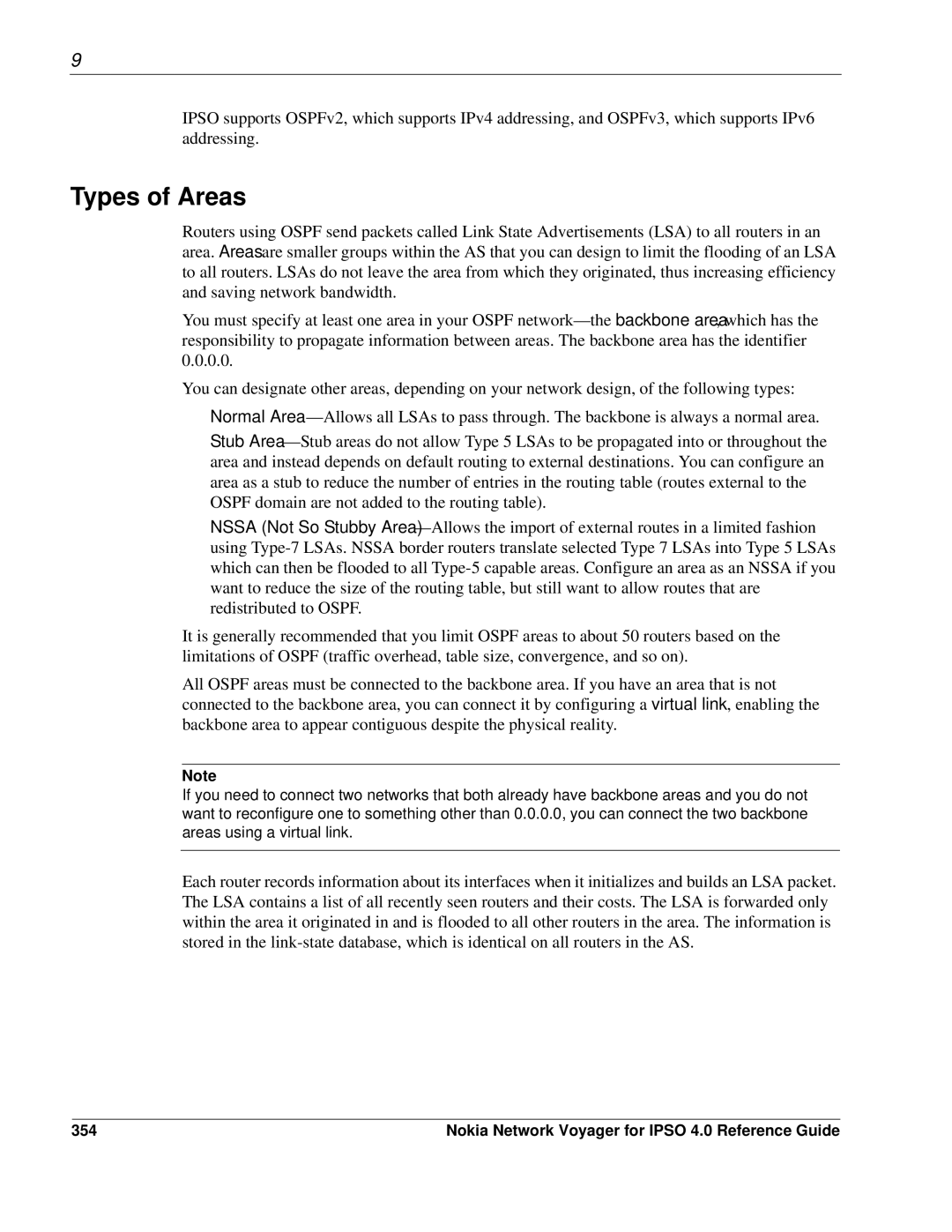
9
IPSO supports OSPFv2, which supports IPv4 addressing, and OSPFv3, which supports IPv6 addressing.
Types of Areas
Routers using OSPF send packets called Link State Advertisements (LSA) to all routers in an area. Areas are smaller groups within the AS that you can design to limit the flooding of an LSA to all routers. LSAs do not leave the area from which they originated, thus increasing efficiency and saving network bandwidth.
You must specify at least one area in your OSPF
You can designate other areas, depending on your network design, of the following types:
Normal
Stub
NSSA (Not So Stubby
It is generally recommended that you limit OSPF areas to about 50 routers based on the limitations of OSPF (traffic overhead, table size, convergence, and so on).
All OSPF areas must be connected to the backbone area. If you have an area that is not connected to the backbone area, you can connect it by configuring a virtual link, enabling the backbone area to appear contiguous despite the physical reality.
Note
If you need to connect two networks that both already have backbone areas and you do not want to reconfigure one to something other than 0.0.0.0, you can connect the two backbone areas using a virtual link.
Each router records information about its interfaces when it initializes and builds an LSA packet. The LSA contains a list of all recently seen routers and their costs. The LSA is forwarded only within the area it originated in and is flooded to all other routers in the area. The information is stored in the
354 | Nokia Network Voyager for IPSO 4.0 Reference Guide |
